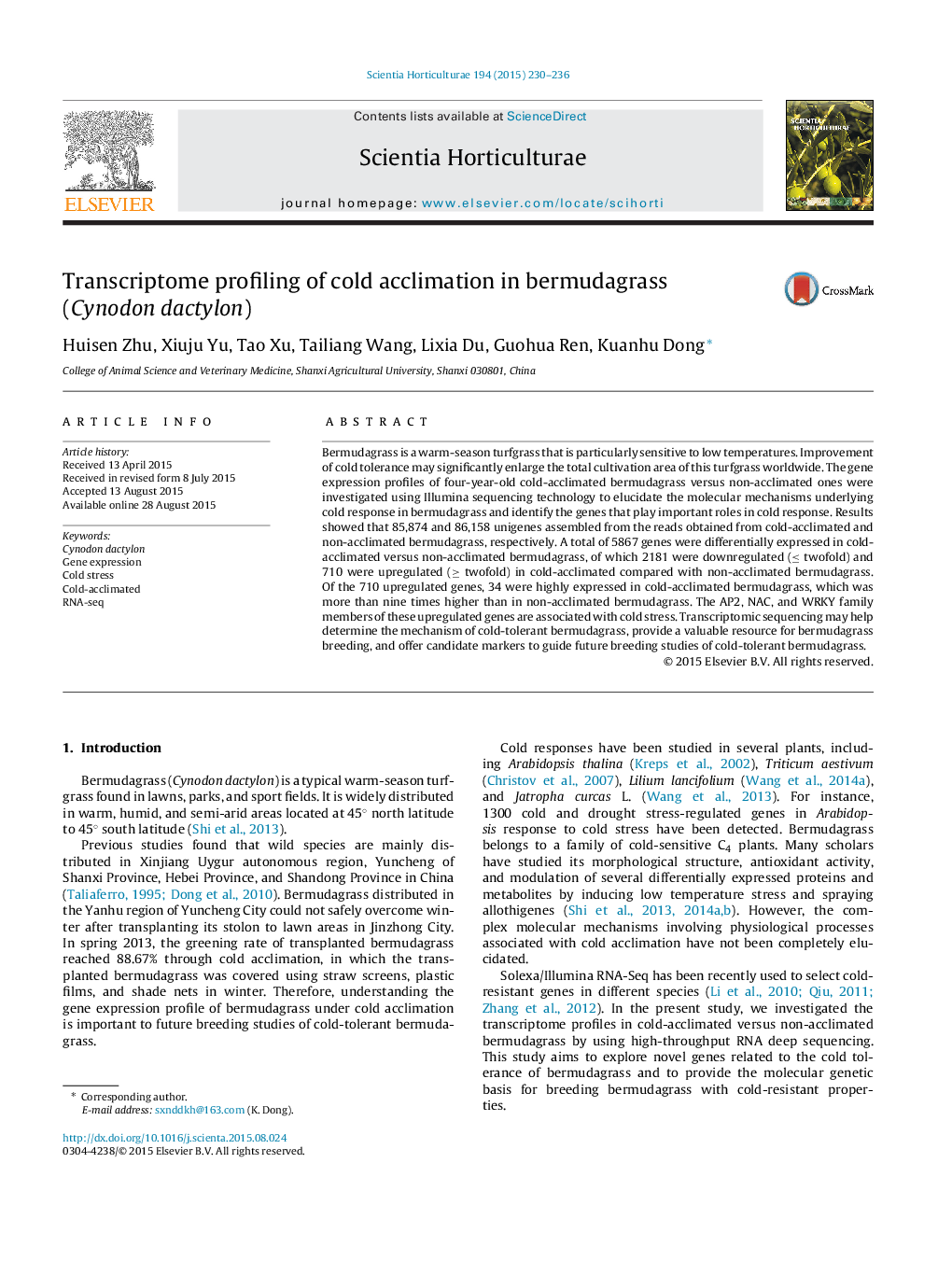| کد مقاله | کد نشریه | سال انتشار | مقاله انگلیسی | نسخه تمام متن |
|---|---|---|---|---|
| 4566338 | 1628804 | 2015 | 7 صفحه PDF | دانلود رایگان |

• Cold-acclimated and non-acclimated bermudagrass were analysed using using Illumina sequencing technology.
• 2181 down-regulated (≤2 fold) and 710 were up-regulated (≥2 fold) were identified in cold-acclimated bermudagrass versus non-acclimated.
• Transcription factors including AP2, NAC and WRKY family members are associated with the cold stress in bermudagrass.
• The results may be helpful to know the mechanism of cold-tolerant in bermudagrass plants.
Bermudagrass is a warm-season turfgrass that is particularly sensitive to low temperatures. Improvement of cold tolerance may significantly enlarge the total cultivation area of this turfgrass worldwide. The gene expression profiles of four-year-old cold-acclimated bermudagrass versus non-acclimated ones were investigated using Illumina sequencing technology to elucidate the molecular mechanisms underlying cold response in bermudagrass and identify the genes that play important roles in cold response. Results showed that 85,874 and 86,158 unigenes assembled from the reads obtained from cold-acclimated and non-acclimated bermudagrass, respectively. A total of 5867 genes were differentially expressed in cold-acclimated versus non-acclimated bermudagrass, of which 2181 were downregulated (≤ twofold) and 710 were upregulated (≥ twofold) in cold-acclimated compared with non-acclimated bermudagrass. Of the 710 upregulated genes, 34 were highly expressed in cold-acclimated bermudagrass, which was more than nine times higher than in non-acclimated bermudagrass. The AP2, NAC, and WRKY family members of these upregulated genes are associated with cold stress. Transcriptomic sequencing may help determine the mechanism of cold-tolerant bermudagrass, provide a valuable resource for bermudagrass breeding, and offer candidate markers to guide future breeding studies of cold-tolerant bermudagrass.
Journal: Scientia Horticulturae - Volume 194, 14 October 2015, Pages 230–236